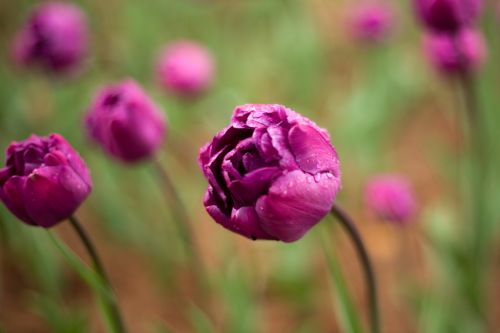
Morning dew in tulips
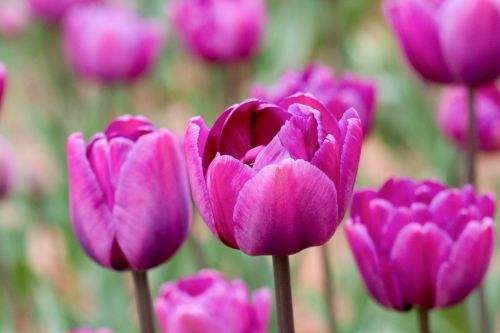
Flowers in Spring
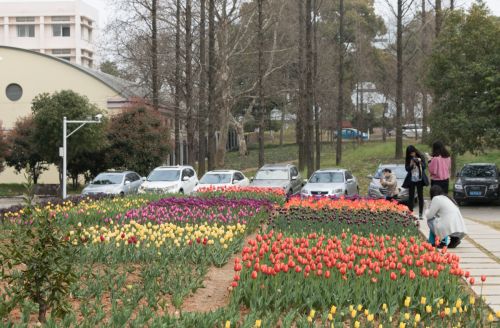
Colorful tulips
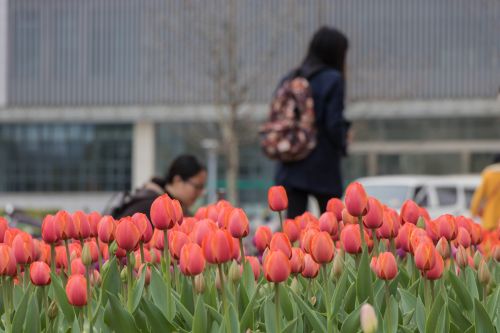
Visitors among the tulips
Recentlyphotos of tulips in front of the Key Laboratory of Horticultural Plant Biology of the Ministry of Education building were gaining popularity among Moments of the Wechat. It turned out that the “new comers” in front of the building were experimental materials imported from the Netherlands,and their researcher was Professor Chan Zhulong, from College of Horticulture& Forestry Sciences (CHFS).
Professor Chan introduced that tulips, as one kind of bulbous flowers, originated in Xinjiang Uygur Autonomous Region, Central Asia, Turkey and some other regions. However, more than 90% tulip bulbs circulating in the international market today are produced in the Netherlands. China, as one of the origin countries, has to pay a lot for importing tulip bulbs from abroad each year. For this reason, CHFS decided to combine the floral industry and disciplinary characteristics to further strengthen the research in the field of bulbous flowers. Professor Chan, one of the selected members in the “100 Talents Plan” of the Chinese Academy of Sciences, was recruited at the end of 2016 by CHFS after efforts from multiple sides. Then Professor Chan and his team went to Xinjiang, Yunnan, Hubei and other places to carry out investigations and studies on tulip’s production situations and problems, further clarifying the research direction of tulips.
This year, nearly 60 thousand tulips of 30 different florescences, petals, colors, forms and heights were planted by the bulbous flower research team in three areas - the front of the Key Laboratory of Horticultural Plant Biology of the Ministry of Education, HZAU Logistics Group base and the flower base of CHFS.
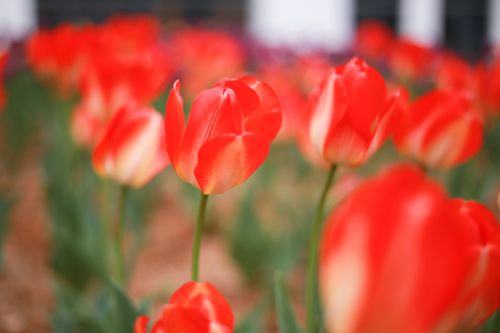
Red tulips as bright as flames
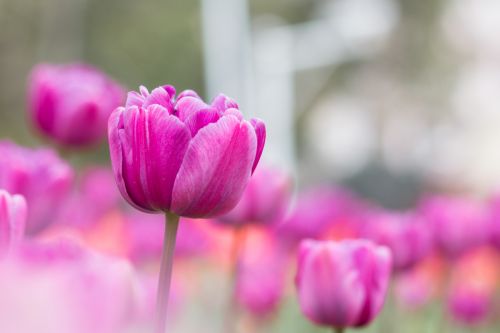
Delicate tulips
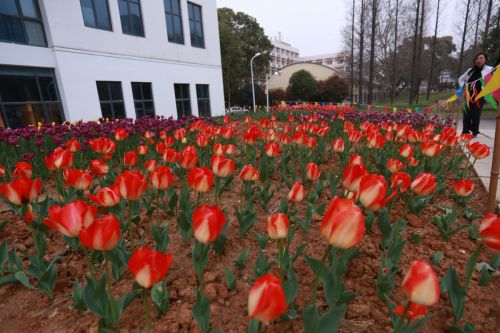
Tulip fields in front of the laboratory
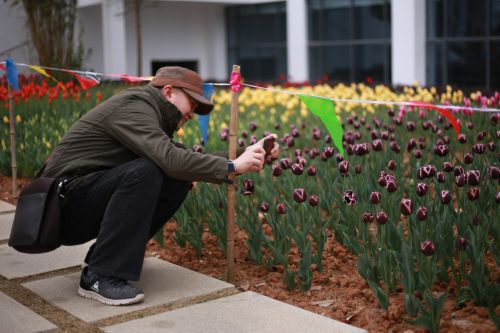
Visitors taking photos with tulips
At present, over 20 varieties of tulips, planted in front of the Laboratory, are used for variety screening based on their growth and blooming status, in order to pick out those that can adapt to the climate in Wuhan for further research. Besides, this action takes advantages of the sightseeing value of tulips to add to the campus a scenic spot which is now at a full-bloom stage and is expected to welcome more visitors in the next two weeks. School leaders, including Gao Chi, Zhou Chengzao and Wu Ping visited the tulip fields.
According to Chan, the tulip research team in CHFC was mainly focusing on four aspects, including tulip bulb production, florescence and its aging, soil, water and fertilizer management and environmental adaptability, hoping to reduce the import dependence of China's tulip industry and progressively achieve the localization of tulip bulb production. Achieving this goal can not only help our bulb flower industry cast off the status of pure imports and increase economic profits, but also make contributions to the construction of ‘Beautiful China’," he said.
Introduction: Chan Zhulong, professor and Ph.D supervisor from the College of Horticulture& Forestry Sciences of HZAU. He graduated and was awarded Ph.D degree in botany from the Institute of Botany, Chinese Academy of Sciences (CAS) in June 2006. During July 2006 to June 2009, he studied as a postdoctor at Michigan State University, engaged in the research on mechanism of plant resistance to salt stress. From July 2009 to December 2011, he was a postdoctor at the Academician Zhu Jiankang’s laboratory in University of California and Purdue University, doing the research on resistance mechanism of plants to drought and cold stress. He was selected to “100 Talents Plan” in the CAS in 2011. He has already published more than 60 papers in the PNAs, Cell Res, J Pineal Res, Plant Physiol, New Phytol and other SCI journals, among which 16 papers enjoy the impact factor of over 5.0. He has also applied for 6 patents.
http://news.hzau.edu.cn/2017/0320/48606.shtml
(By Chen Chunjia)
